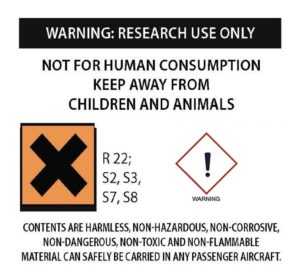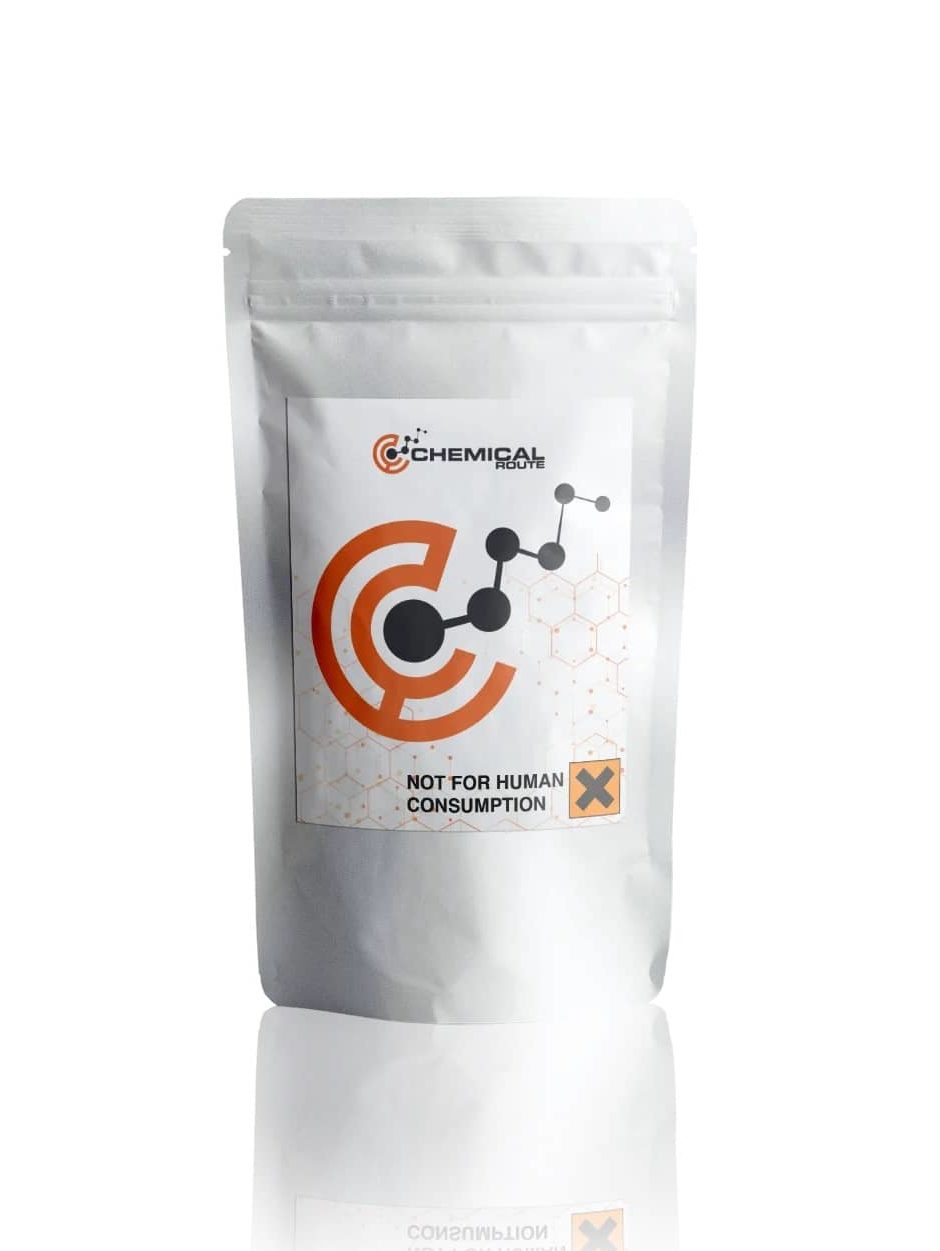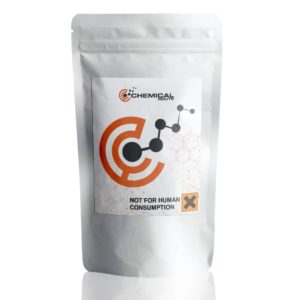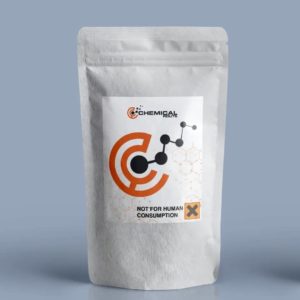Description
Dextromoramide, Palfium, Palphium, Jetrium, Dimorlin
Product information
Synonyms Palfium, Palphium, Jetrium, Dimorlin
CAS 357-56-2
IUPAC (3S)-3-methyl-4-morpholin-4-yl-2,2-diphenyl-1-pyrrolidin-1-yl-butan-1-one
Formula C25H32N2O2
Molecular Weight 392.534 g·mol−1
Purity 99.0 % min.
Formulations A neat solid, Powder
Solubility
- DMF: 25 mg/ml
- DMF:PBS (pH 7.2) (1:1): 0.5 mg/ml
- DMSO: 20 mg/ml
- Ethanol: 10 mg/ml
Shipping & Storage Information
Dextromoramide is a powerful opioid analgesic that is similar to morphine. This medication has a shorter duration of action than morphine, so it is often used as an opioid analgesic. Because of its powerful analgesic properties, dextromoramide is subject to various drug prohibition regimes both internationally and within individual states. In some countries, however, it is legal to prescribe dextromoramide for pain.
History
Dr Paul Janssen discovered dextromoramide in 1956, which is a type of opioid that can be used to treat pain. It was also used in combination with other drugs such as fentanyl. Other important drugs that can be used with dextromoramide include piritramide and loperamide. During the 1970s, dextromoramide was widely used in the UK and Australia. Due to the lack of sufficient supplies of the precursor chemicals used to make the drug, it was discontinued in the UK in 2004.
It’s believed that there was a shortage of dextromoramide for around a year. The main reason why Palfium wasn’t brought back to the market was due to how addictive it is. Similar to morphine, dependence liability is a condition that can lead to withdrawal symptoms. Due to the availability of the drug in certain European countries, including the Netherlands, Ireland, and Luxembourg, it’s believed that Palfium could be imported into other countries under a treaty that was implemented in 2002.
Dextromoramide is a Schedule I controlled substance in the US, and it was out of the market for around a decade after the passage of the new controlled substances act in 1970. The salts used to make the drug are dextromoramide hydrochloride and dextromoramide tartrate.
Medical Use
This drug has a fast onset of action and a high concentration of active compounds, making it an ideal choice for cancer pain. It also has a low tendency to cause constipation, which is a common issue with other opioid analgesics. Its tolerance to the effects of the drug also tends to develop slowly, as compared to other short-acting opioids.
In one study, researchers gave 72 cats each 0.05 mg kg-1 dextromoramide or levo-methadone. Twenty minutes after the operation, the animals were assessed for behavior and body position, and physiological variables were recorded every 30 minutes. One animal from each group showed signs of pain after 60 minutes, but only in one of the groups given dextromoramide. This is despite the fact that both drugs were found to be equally effective in controlling pain.
Pharmacology
The half-life of dextromoramide is 215.3 minutes. It has a volume of 0.58 L/kg and a distribution of 0.20 L/kg. After the first phase, the plasma levels reach a peak of around 0.5-4.0 h, and then decline steadily. In most patients, the half-lives are maintained at around 1.5 to 4.7 h.
Chemistry
The right-handed isomer of racemoramide is Dextromoramide. This compound is similar to levomoramide in that it is produced by a combination of the two. The chemical name of this compound is: dextromoramide.
During the course of research, dextromoramide was discovered in a group of compounds known as dialycyamino-butyramides, which are known to be very active in blocking gastric secretions in humans. Other drugs from this family show antihistamine and antispasmodic effects, but most of the research focused on developing new analgesics.
The structures of the drugs in this family were studied. In particular, dextromoramide was able to improve the properties of certain structural features.
At the 1-amide group, the dimethylamide and pyrrolidine substituents were active. With pyrrolidine, dextromoramide was more potent.
The alkyl chain was also more potent when either 3-methylation or methylated were added to the solution. In the 3-methyl analogues, the dextro isomer was more active.
At the 4-amine group, the piperidine, dimethylamine, and morpholine were active. With the addition of either methylated or 3-methylation, the dextro isomer was more potent.
Dextromoramide was the most potent compound in this family when it was produced with a combination of the dextro methyl group and the phenyl rings unsubstituted. It was the only one of the compounds that was widely used during this period.
The toxicological and physiological properties of this compound has not been analyzed. Usage of this Chemical should be for research and forensic purposes only.
WARNING This product is not for human or veterinary use.

This product is only available to persons of 21 years old and above.
Hazard statement(s)
| H302 | Harmful if swallowed |
| H315 | Causes skin irritation |
| H319 | Causes serious eye irritation |
| H332 | Harmful if inhaled |
| H335 | cause respiratory irritation |
| H336 | cause drowsiness or dizziness |
| Precautionary statement(s) | |
| P264 | Wash hands thoroughly after handling |
| P280 | protective gloves/protective clothing/eye protection/face protection |
| P305 + P351 + P338 | IF IN EYES: Rinse cautiously with for several minutes. Remove contact lenses, if present and easy to do. Continue rinsing. |
| P337 + P313 | If eye irritation persists: Get medical advice/attention |
| P261 | Avoid breathing dust/ fume/ gas/ mist/ vapors/ spray |
| P271 | Use only outdoors or in a well-ventilated area |
| P304 + P340 | IF INHALED: Remove victim to fresh air and keep at rest in a position comfortable for breathing |
| P312 | Call a POISON CENTER or doctor/physician if you feel unwell |
| P403 + P233 | Store in a well-ventilated place. Keep container tightly closed |
| P405 | Store locked up |
| P501 | Dispose of contents/container to a licensed disposal company |




Reviews
There are no reviews yet.